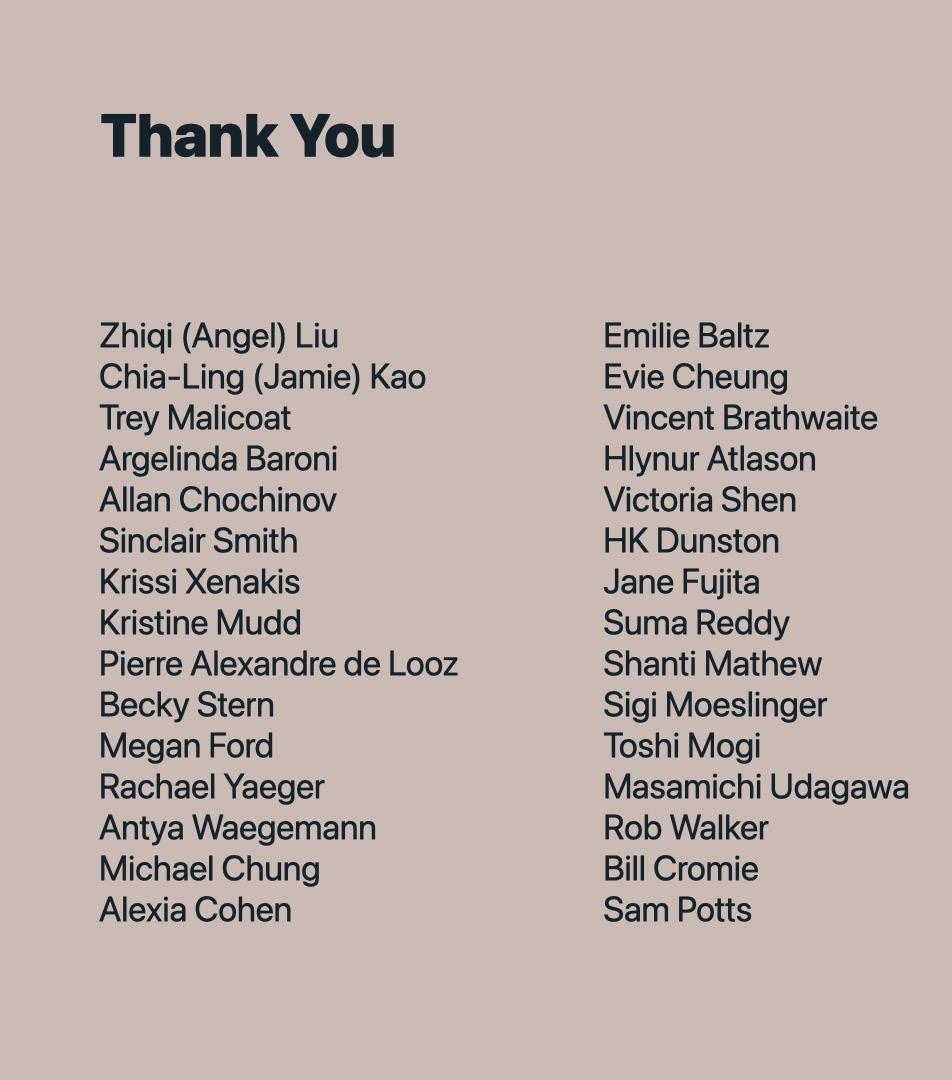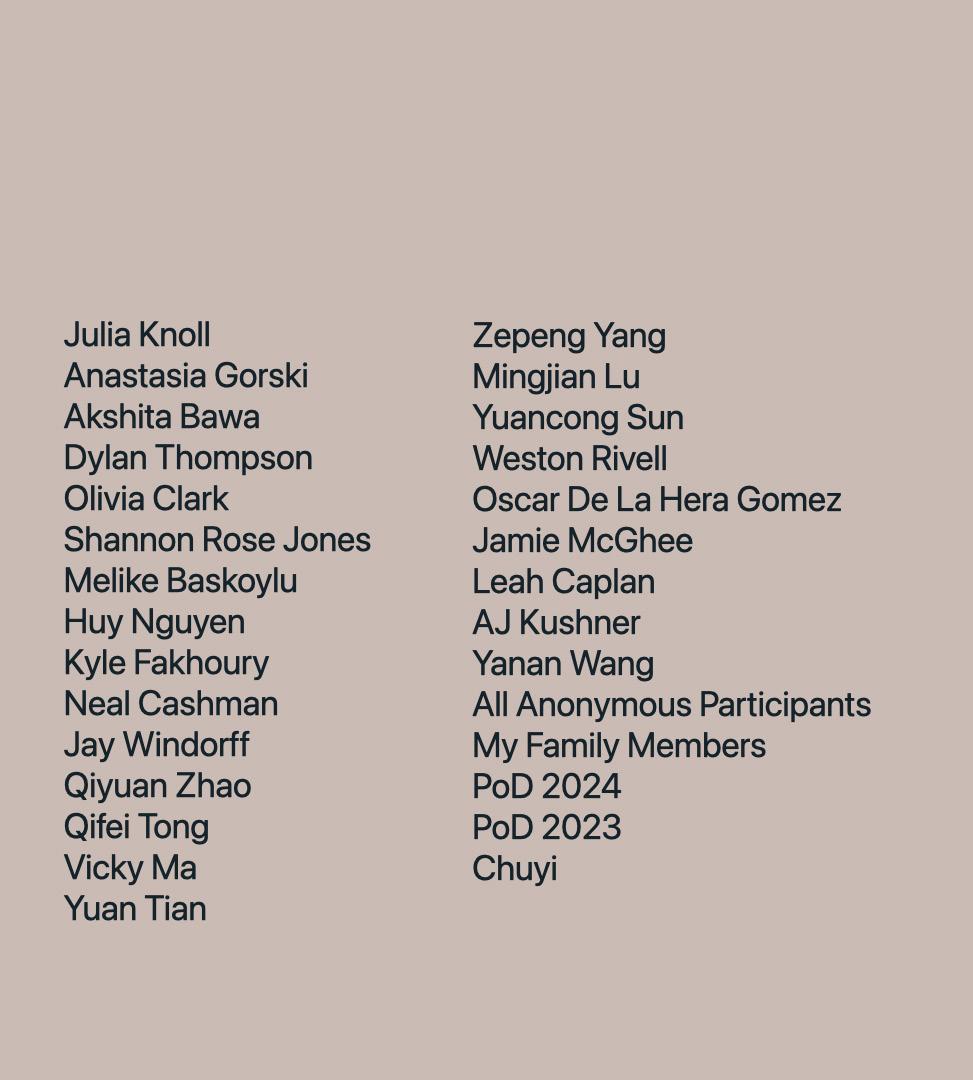

Dreamscapes of Healing

Exploring Therapeutic Avenues for Nightmares
Rora Pan






"The interpretation of dreams is the royal road to a knowledge of the unconscious activities of the mind."
—— Sigmund Freud



Dreamscapes of Healing: Exploring Therapeutic Avenues for Nightmares



Throughout my dreaming experience, my dreams vary in content; some reflect past experiences, others represent desires, and some feel like predictions. Three years ago, I lost my grandfather. I regret not calling him more often. Now, sometimes he comes to my dreams, looking healthy and well. I believe these dreams are helping me heal. Dream seems a powerful tool for us to recover ourselves.
"Dreamscapes of Healing," a multifaceted approach to managing nightmares that integrates both technological and therapeutic solutions. It investigates a variety of challenges faced by individuals from PTSD sufferers to the general population, seeking both independent and professional avenues to better manage their sleep experiences. The project presents a comprehensive suite of design solutions, including digital platforms for therapeutic support and guidance tailored for PTSD sufferers, as well as innovative physical devices intended for in-bed use to promote breathing exercises and sound hypnosis. Furthermore, it introduces psychological techniques for rewriting traumatic nightmares and incorporating new narratives, aiming to diminish the fear associated with waking in darkness and alleviate First Night Effect (FNE) Anxiety. This thesis underscores the potential of combined practical tools and psychological interventions in reducing nightmare frequency and severity, and enhancing sleep quality in new environments, ultimately empowering individuals to effectively manage their nightmare challenges.


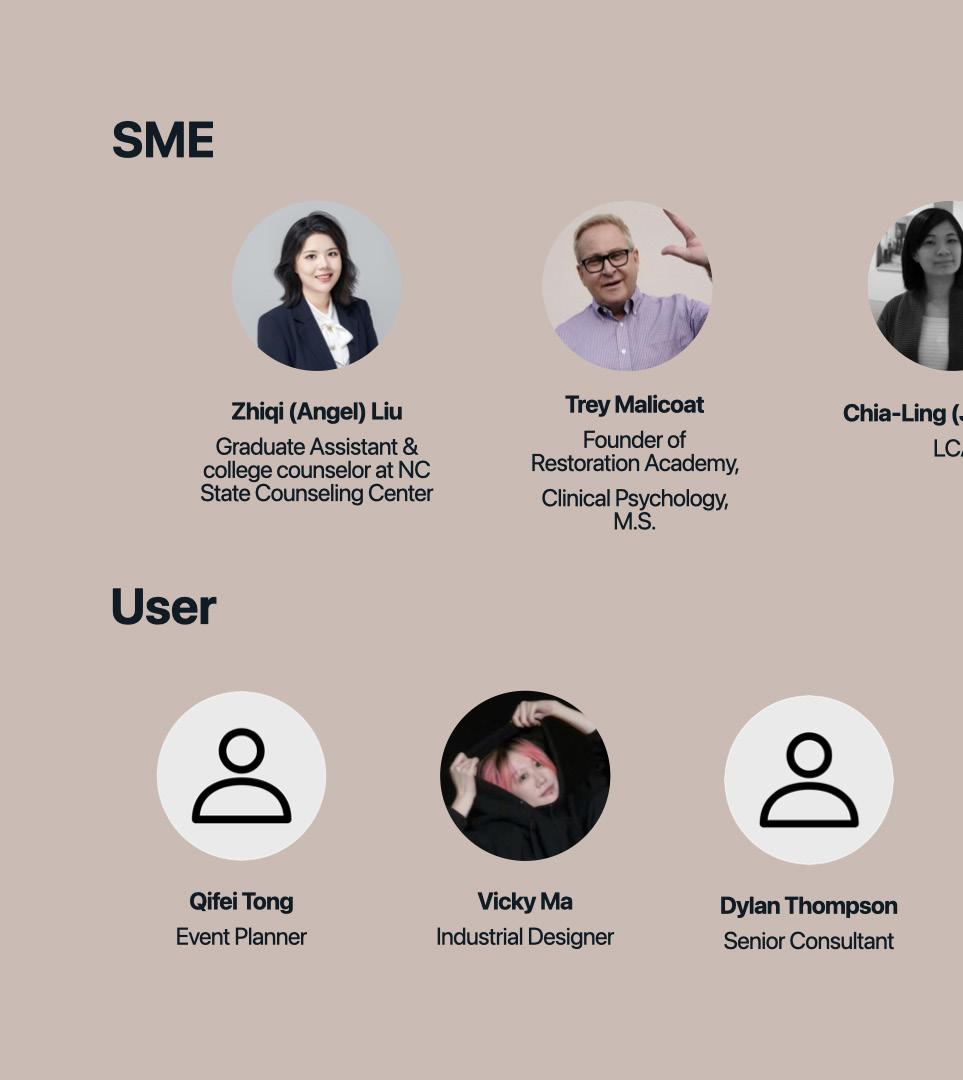
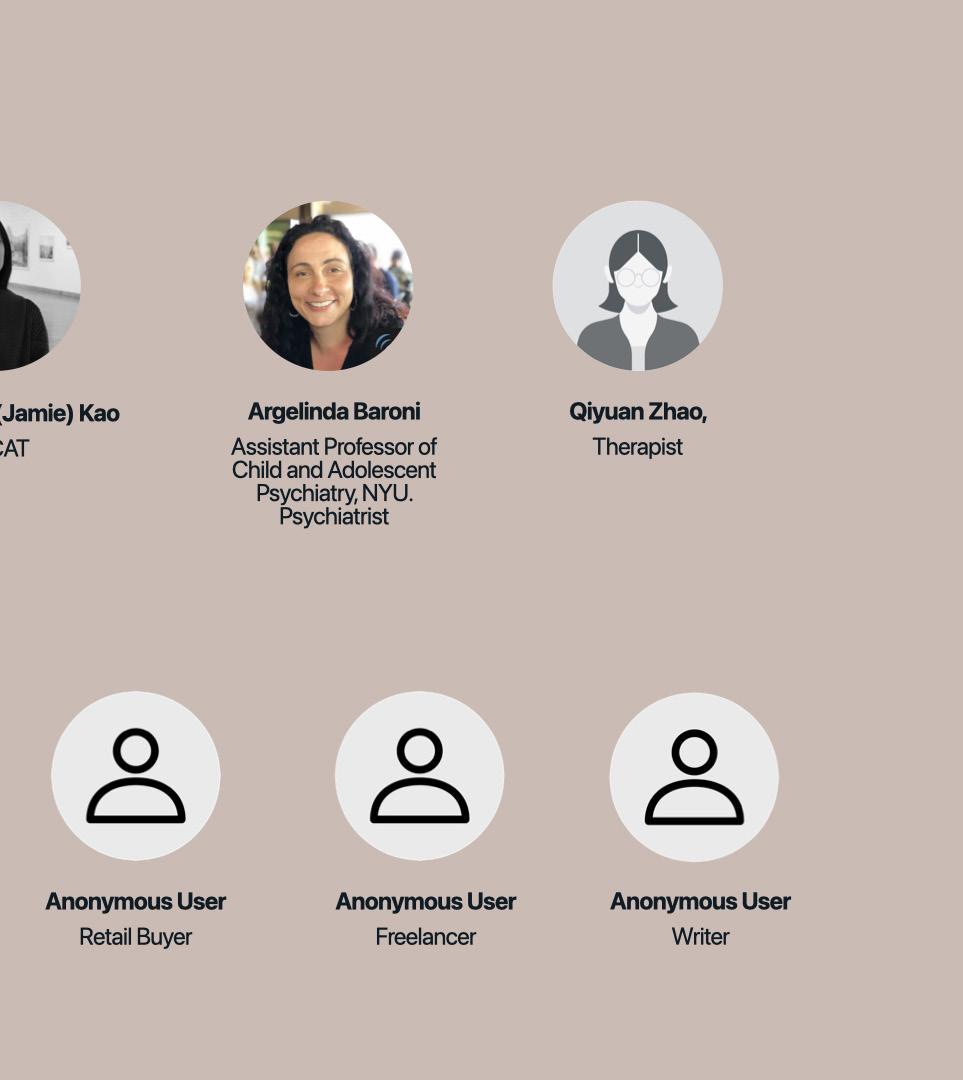

Sleep and dreams have a deeply intertwined relationship.
Sleep is essential for maintaining overall health and well-being, influencing how we feel during our waking hours.





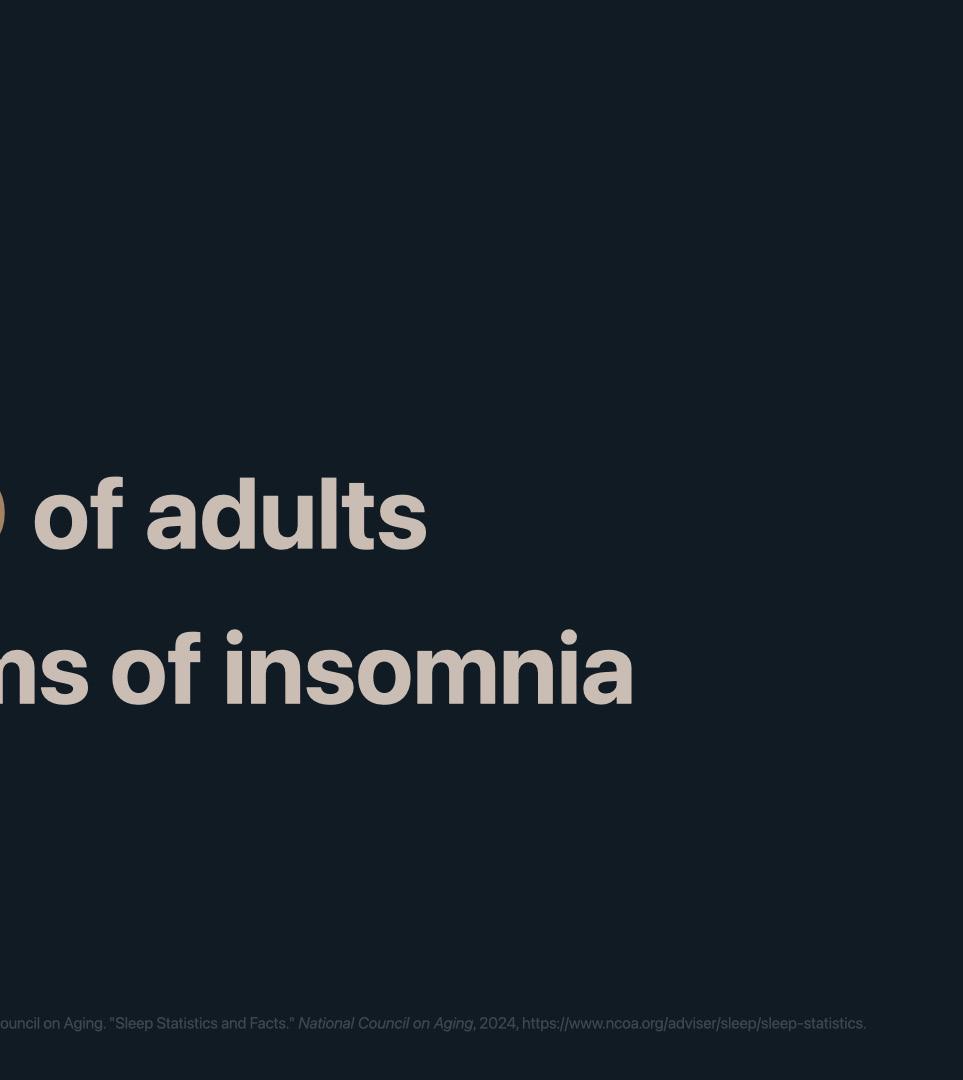
what factors affect sleep patterns?

Studies have shown people simply sleep better when their bedroom is optimized for temperature, noise, light levels, and comfort.



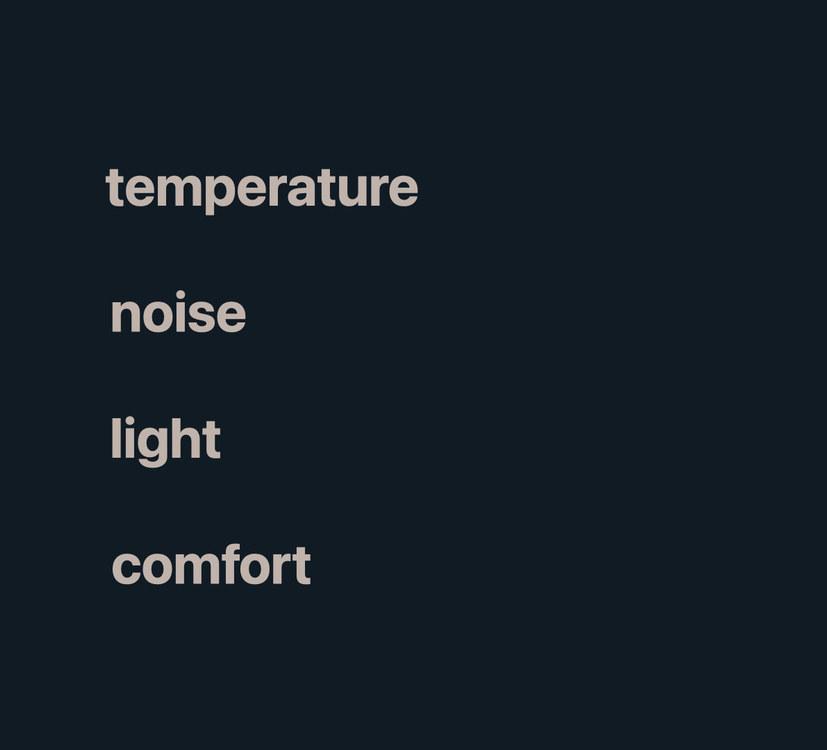

Noise


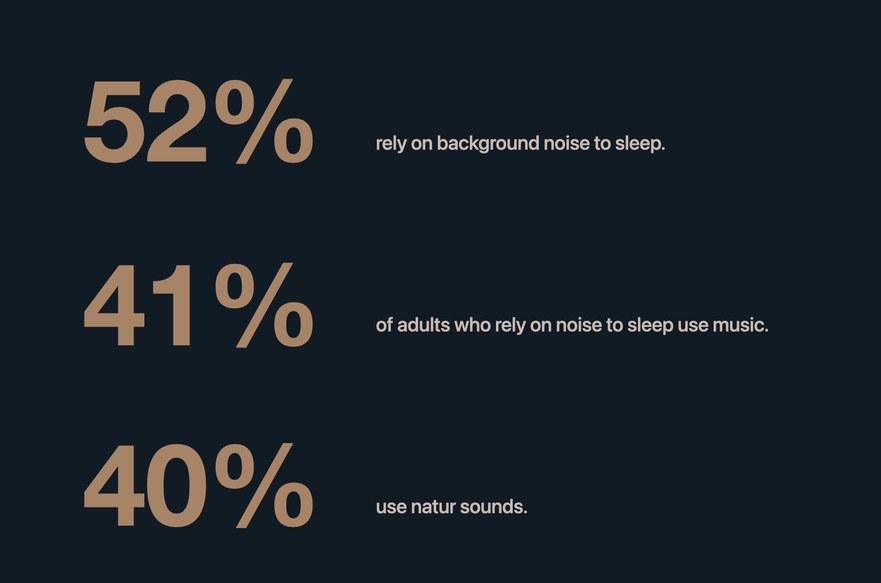

Comfort Zone




"A psychological state in which things feel familiar to a person and they are at ease and in control of their environment, experiencing low levels of anxiety and stress."

First Night Effect


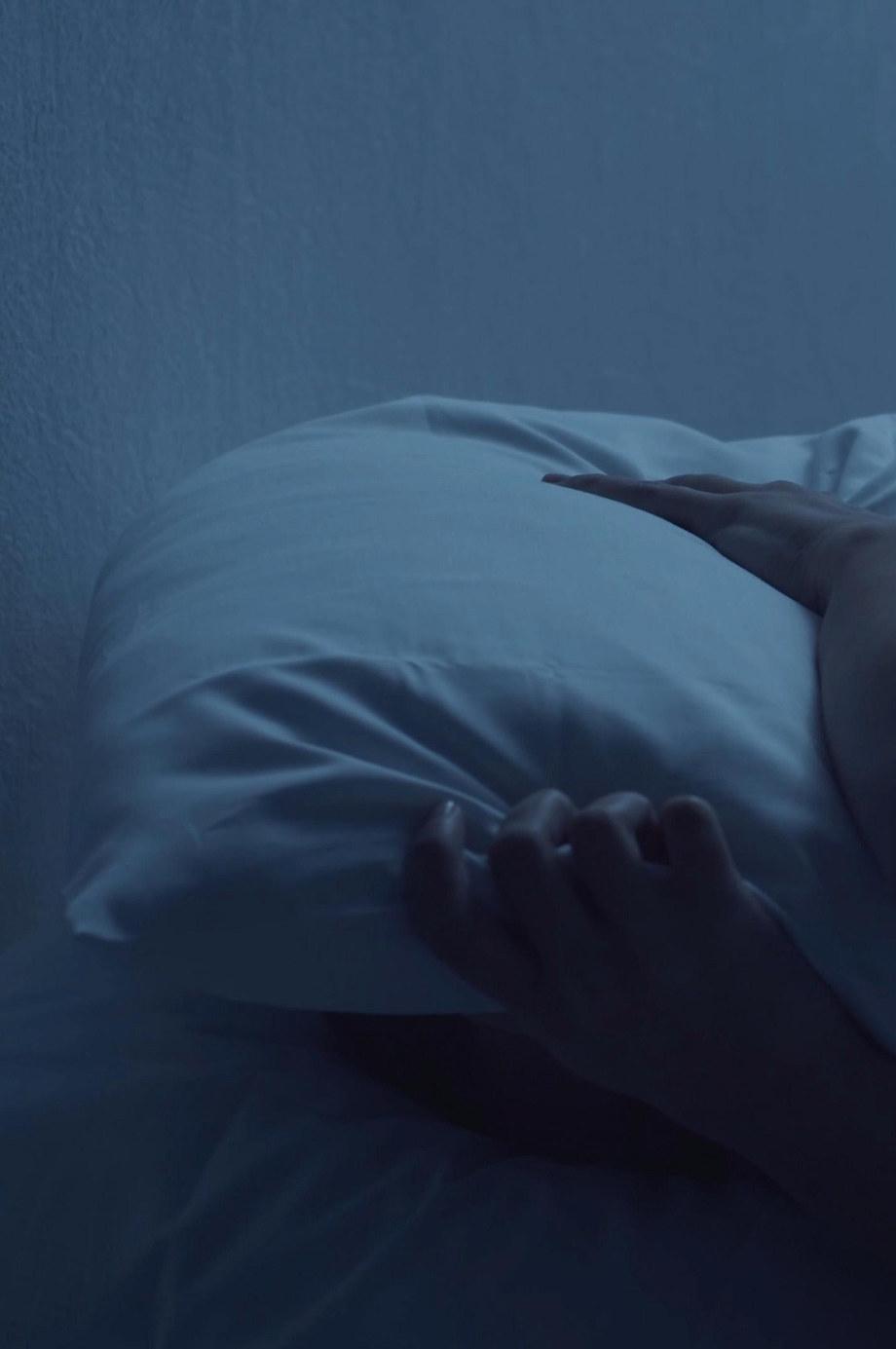

When individuals sleep in a new place, one hemisphere of the brain stays more alert than the other. This survival mechanism, known as the First Night Effect (FNE).








To prevent FNE triggers nightmare,I talked with people about their sleep quality during their business travel.The answers provide the insight into their experiences.
Maintaing productivity, adapting to unfamiliar environment, managing jet lag are their goals.
Especially adapt unfamiliar environment.


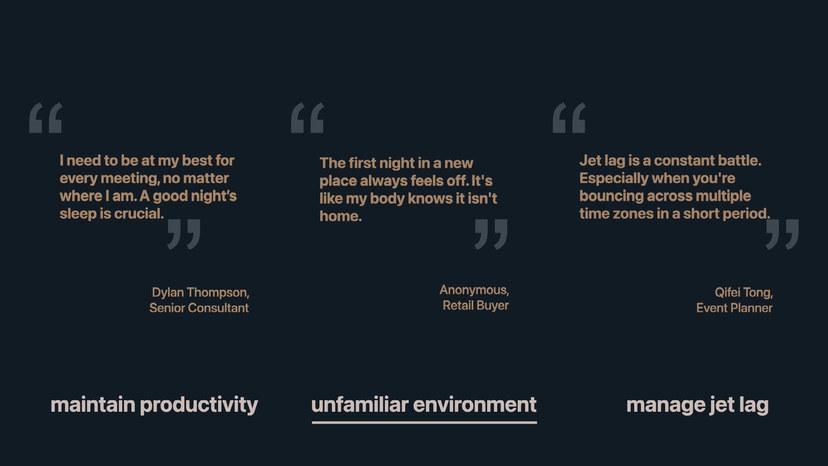

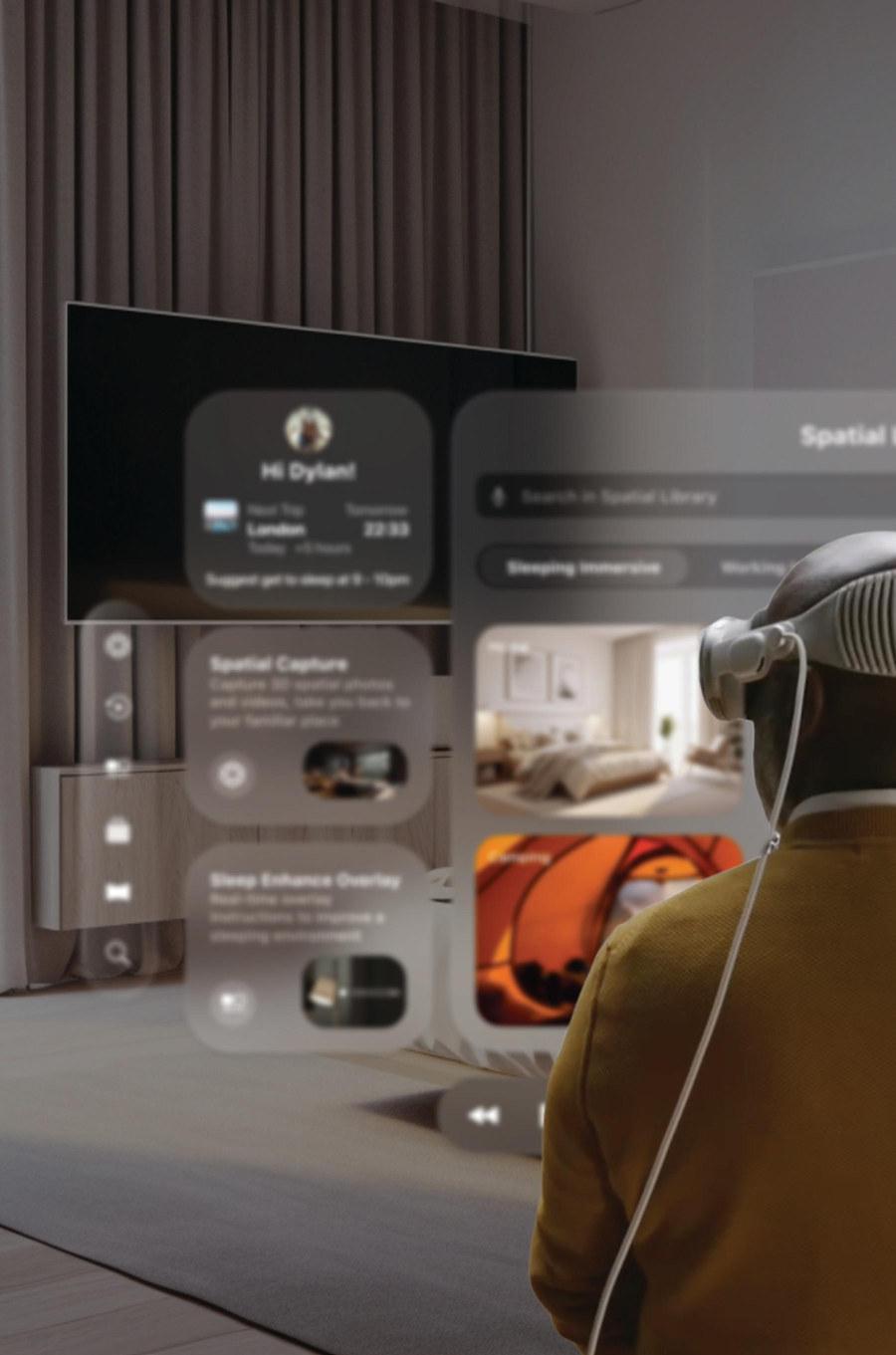







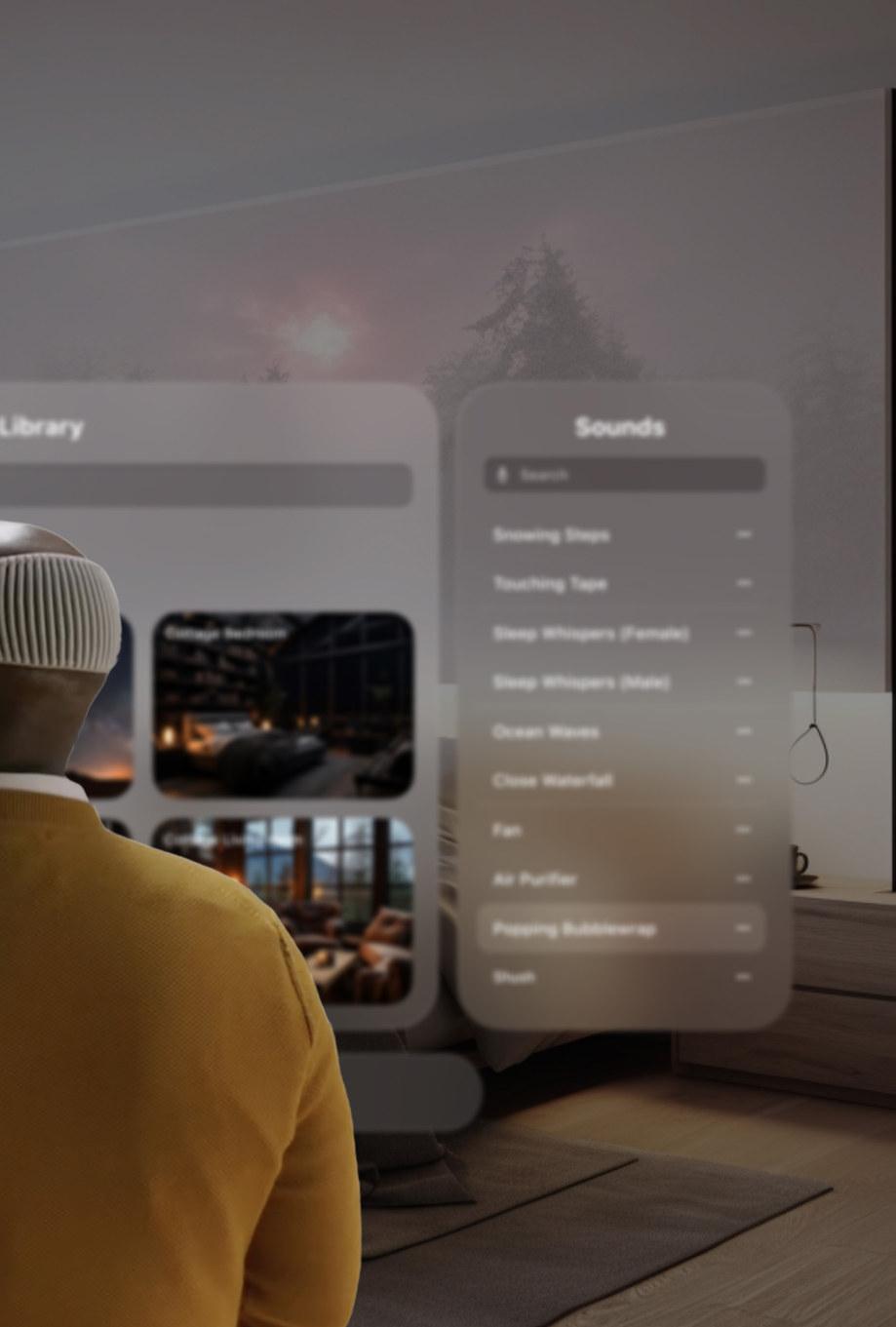






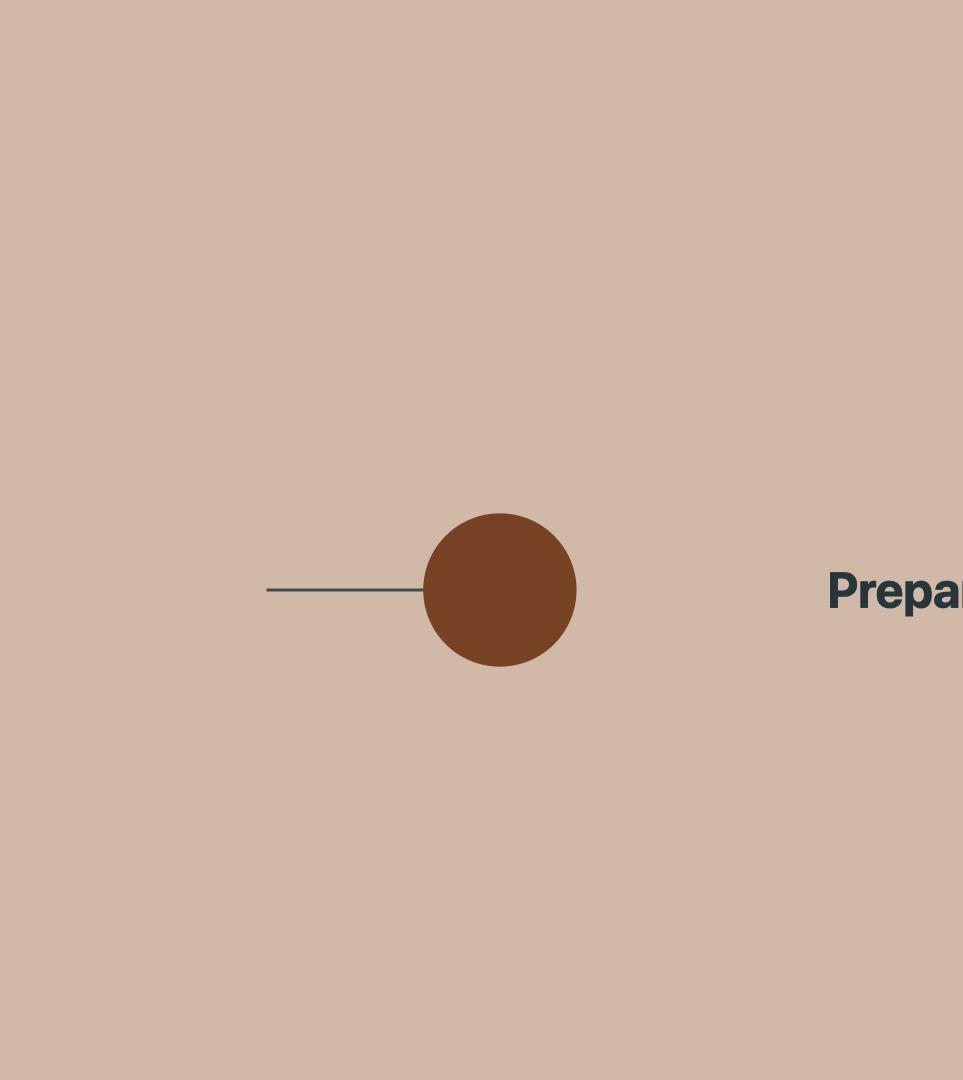

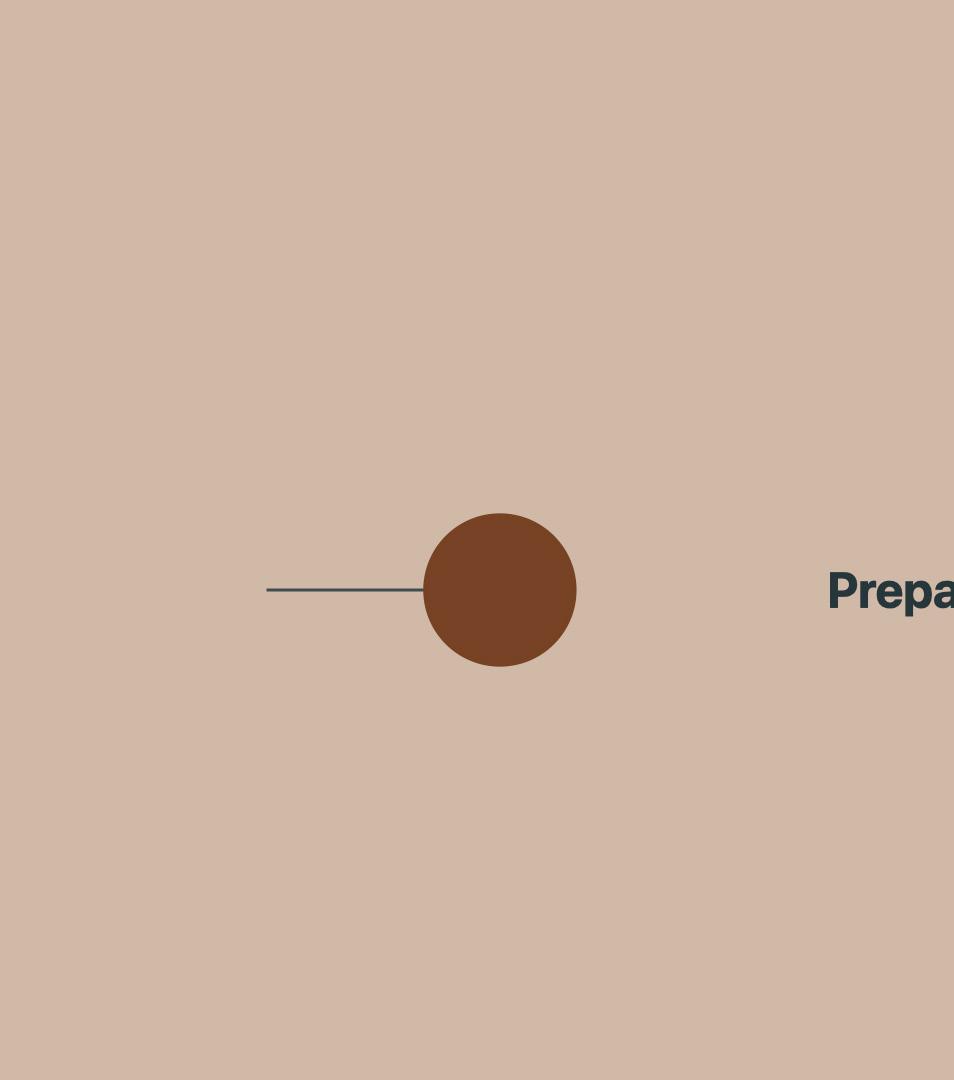

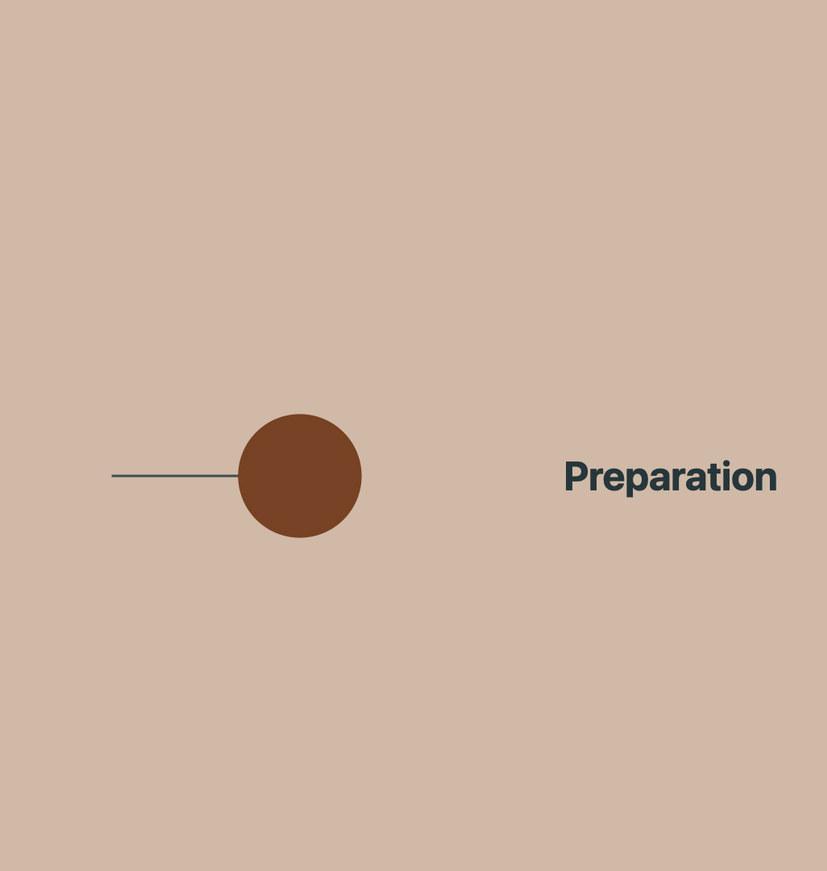



When receive the travel notice, Sync with travel itinerary to suggest optimal times to sleep due to the different time zone.
Take your familiar environment to your destination by Spatial Capture feature.

Follow the instruction to achieve perfect Spatial Capture quality.
After capture, review the result.
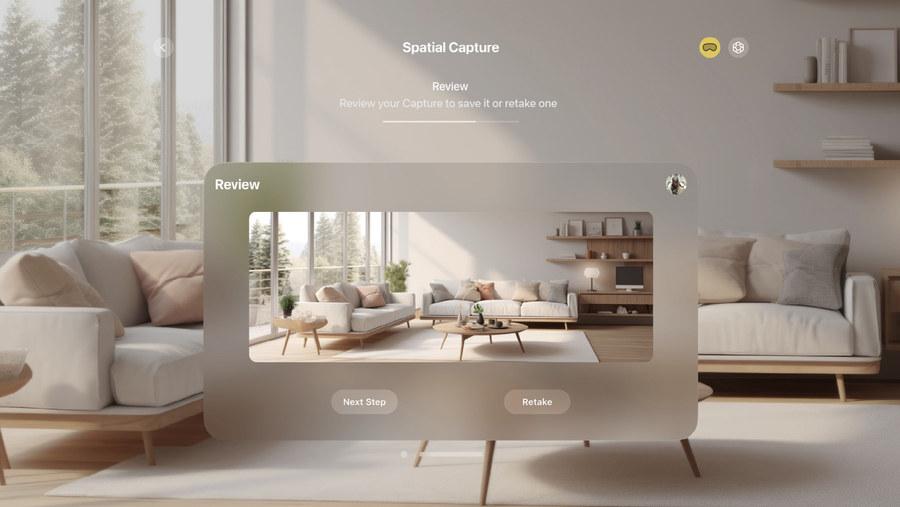
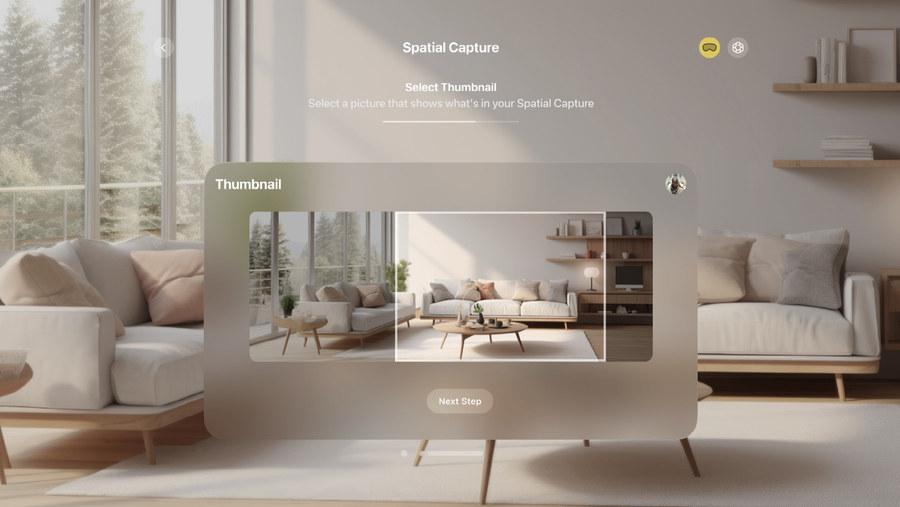
Set up the thumbnail.
Name and save it for future use.
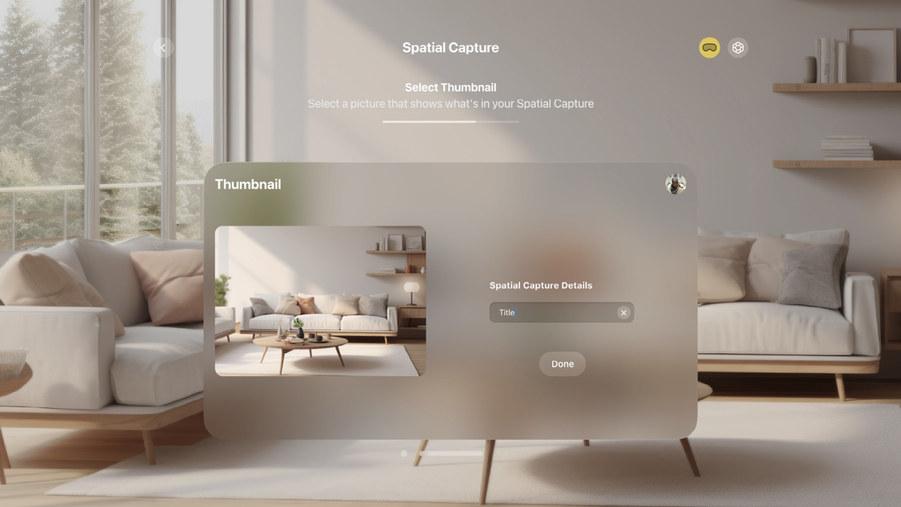














Sleep Enhance Overlay Feature
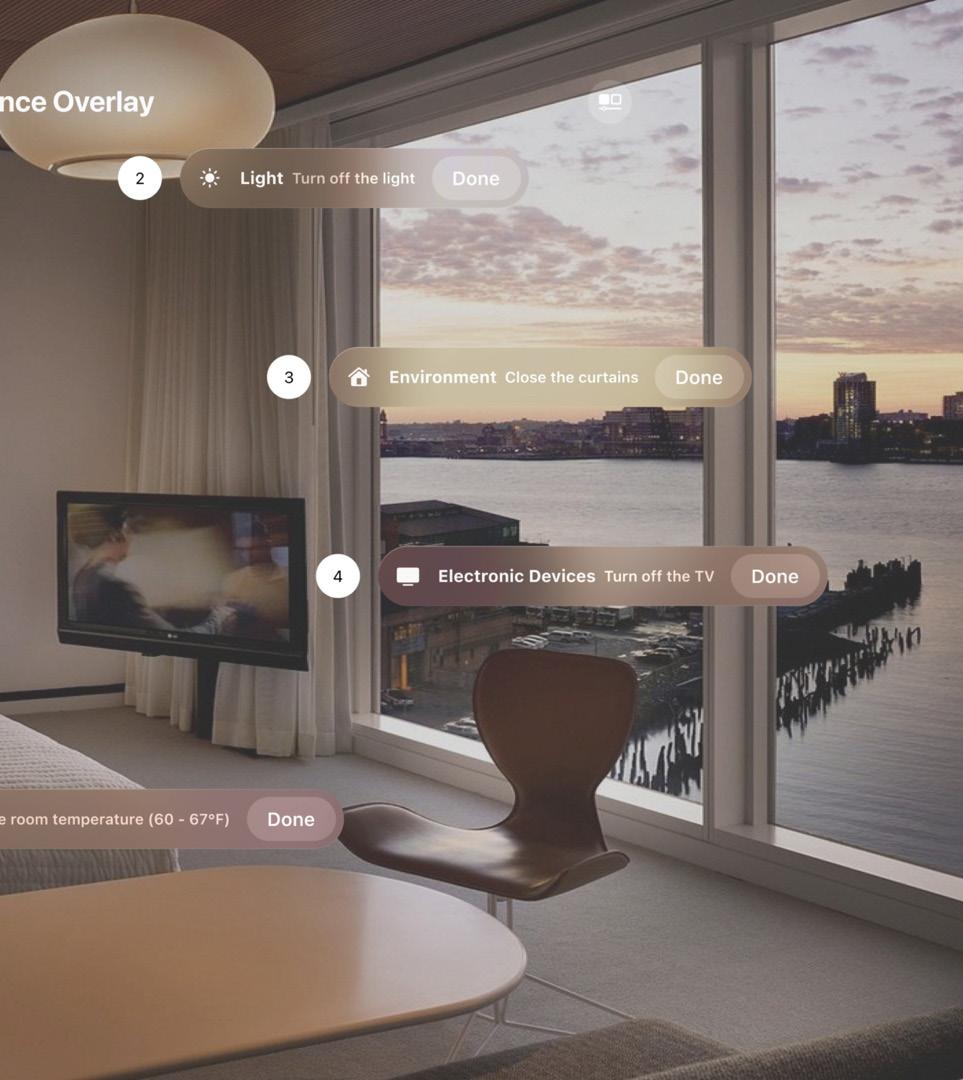
When arrived hotel, modifying hotel room settings to quick to fall asleep and improve sleeping quality.








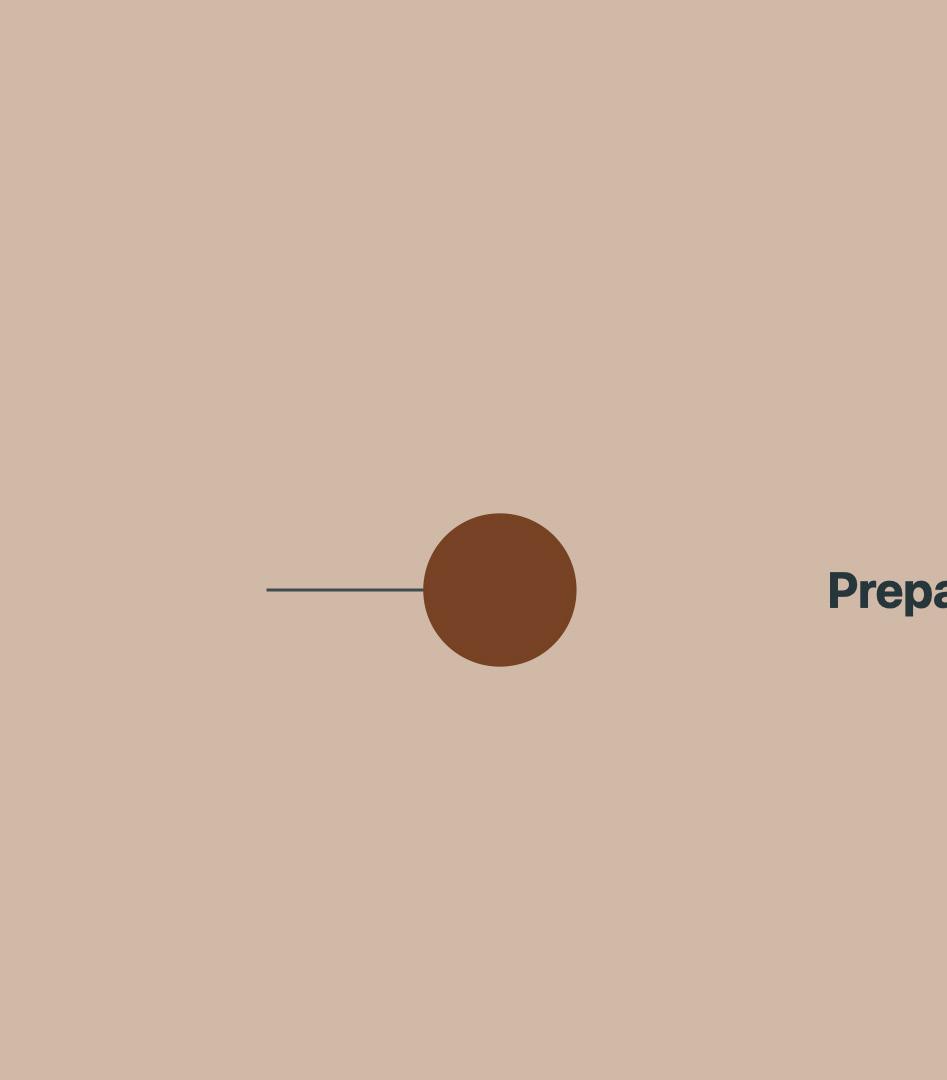

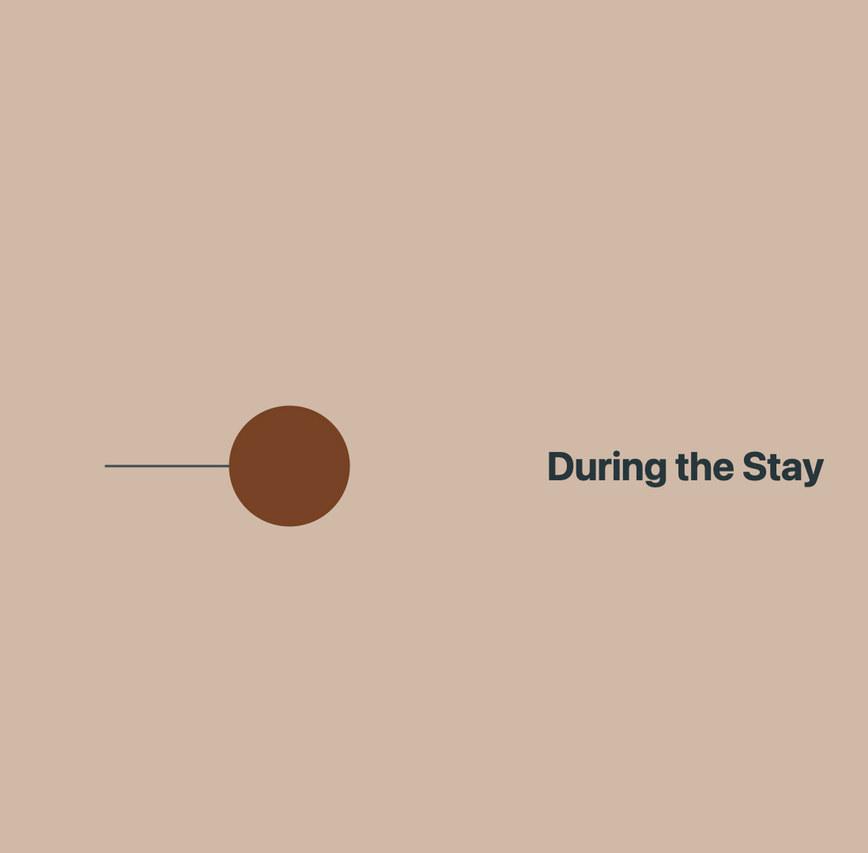


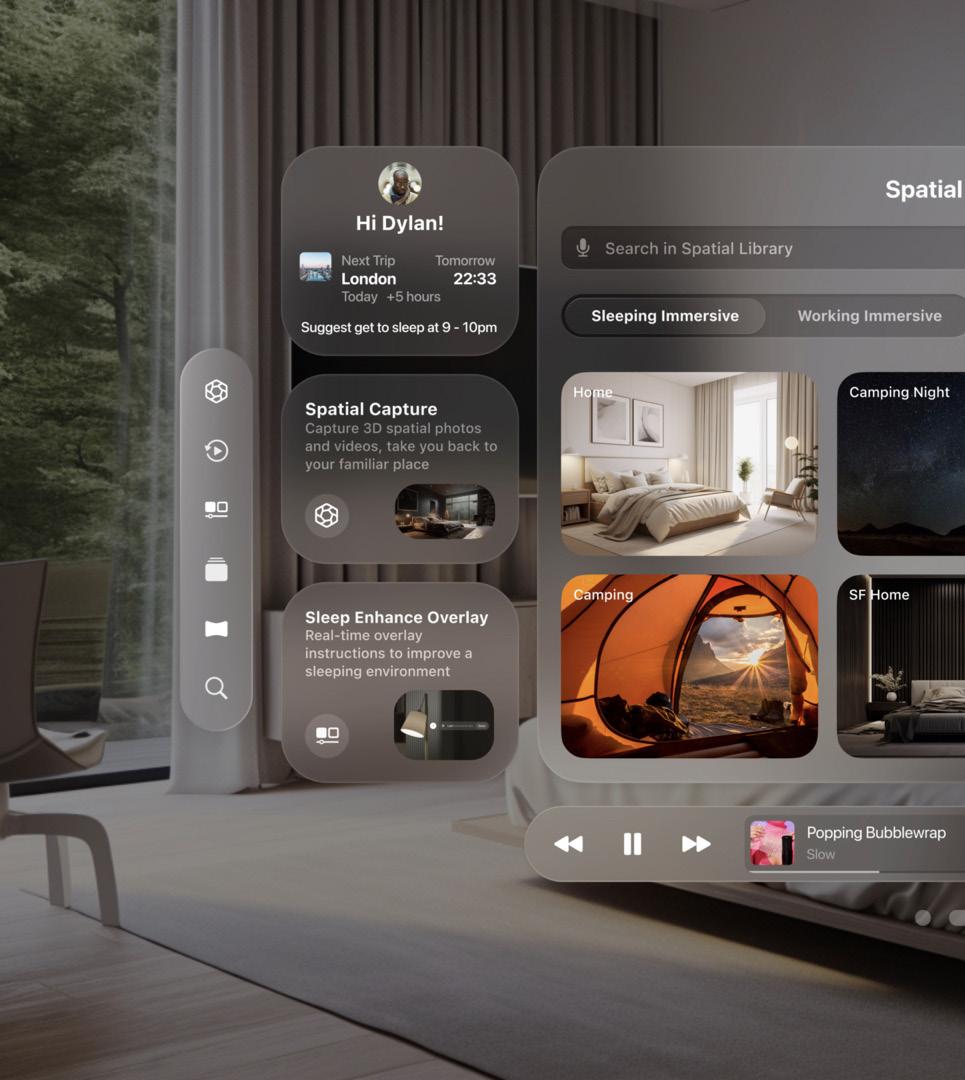
Using the Spatial library to choose what you save to mirror the comfort of your familiar environment, coordinate soothing sleep sounds to facilitate better sleep, alleviate FNE effect to prevent nightmares and optimize performance the following day.
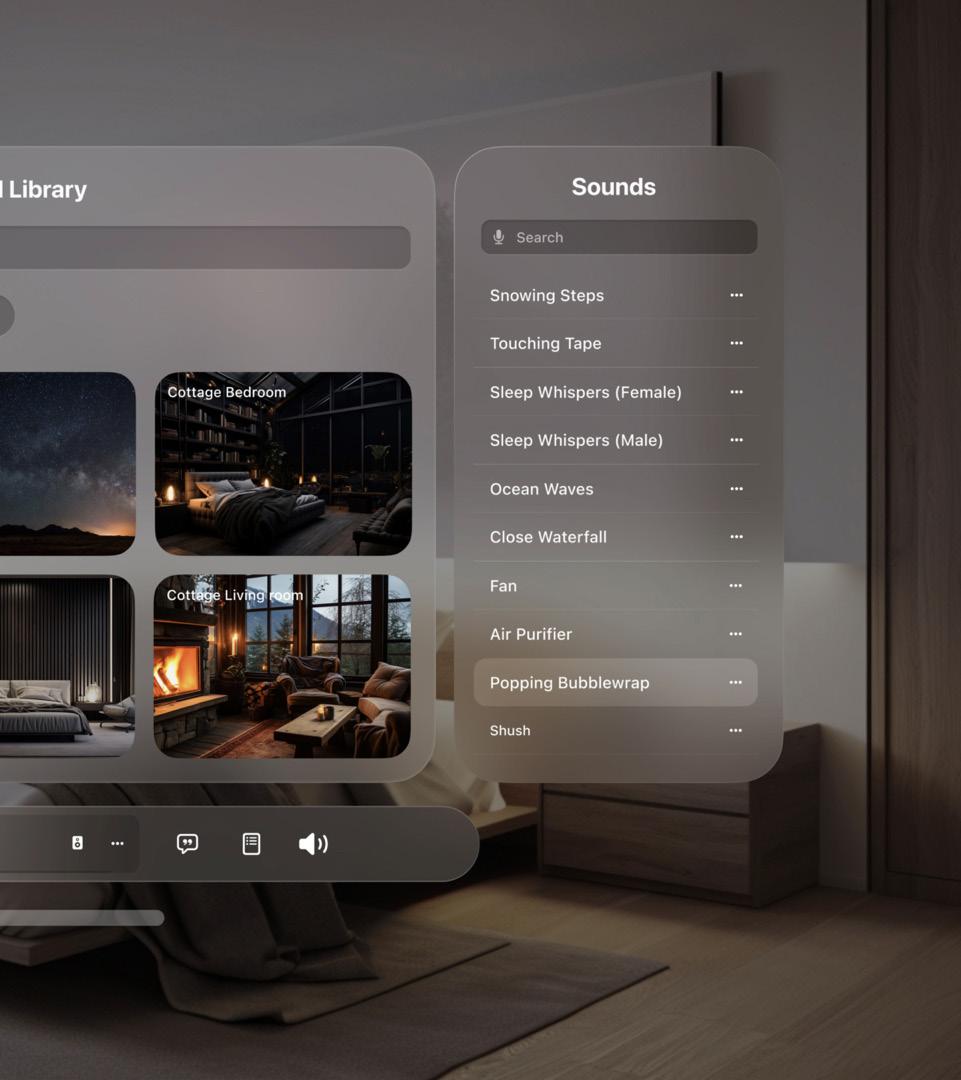
SlumberSync leverages the power of digital technology to address environmental factors and prevent nightmares, so it becomes critical to address specific nightmares.
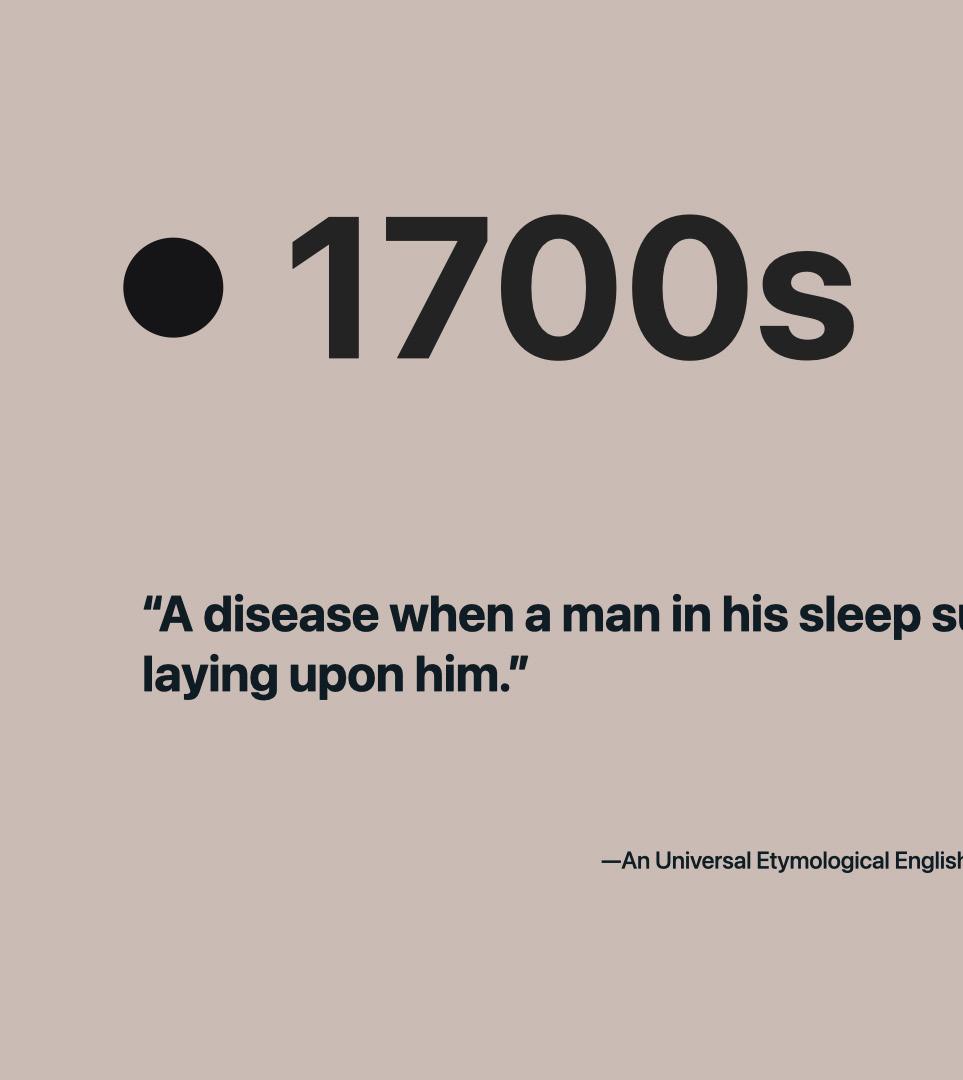






Rapid eye movement sleep (REM) is a stage of sleep. During these rem episodes that brain structures in the default network exert influence, and vividly recalled dreams occur most often.
Nightmares tend to happen during the period of sleep when REM intervals lengthen. We tend to dream on the sleep-wake cusp, images imagined while dreaming, including the vivid, often terrifying images produced during nightmares, are remembered.










Nightmares are not only more common in those with PTSD, they are more frequent, sometimes occurring several times a week.




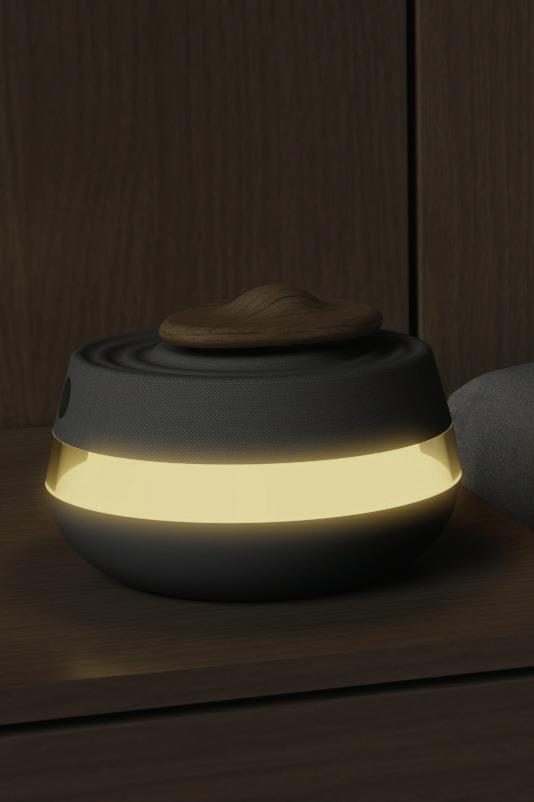












Lumineo, a therapeutic sleep device compatible with wearable technology and sensory stimulation to address PTSD-related nightmares.
To provide PTSD nightmare sufferers with adverse consequences and decreased psychological and physiological functioning that guides PTSD sufferers to peaceful nights and rejuvenating mornings.
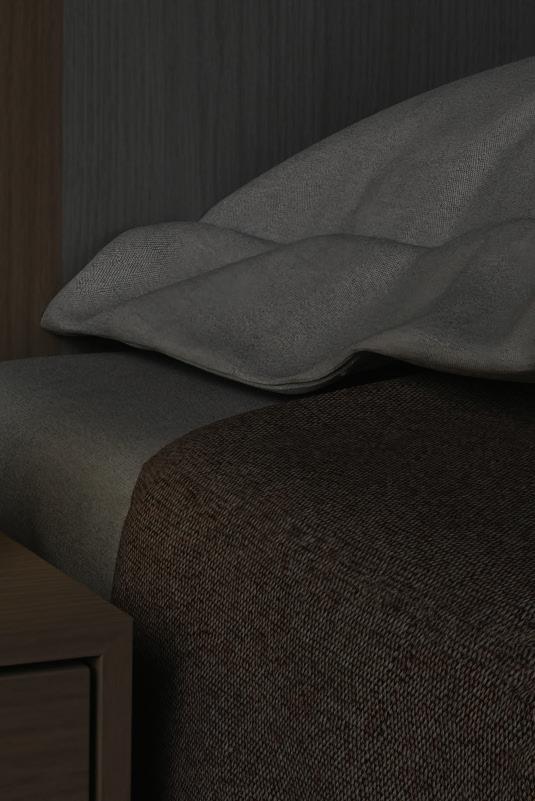
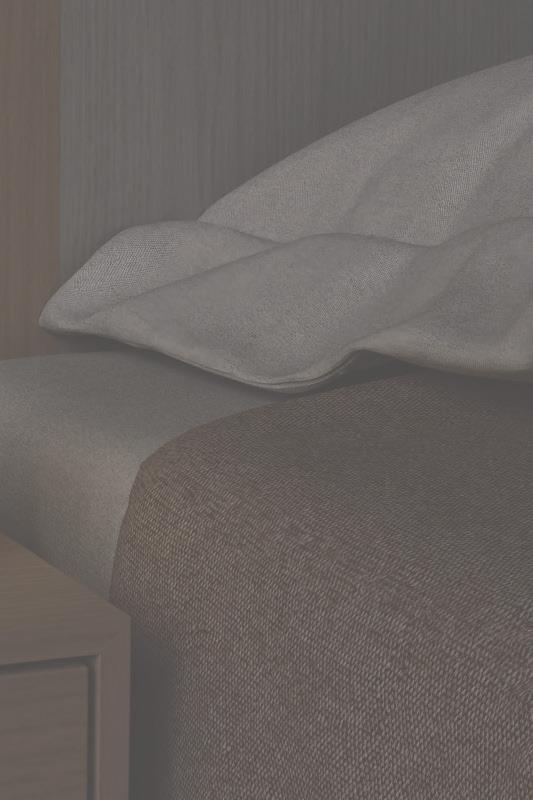
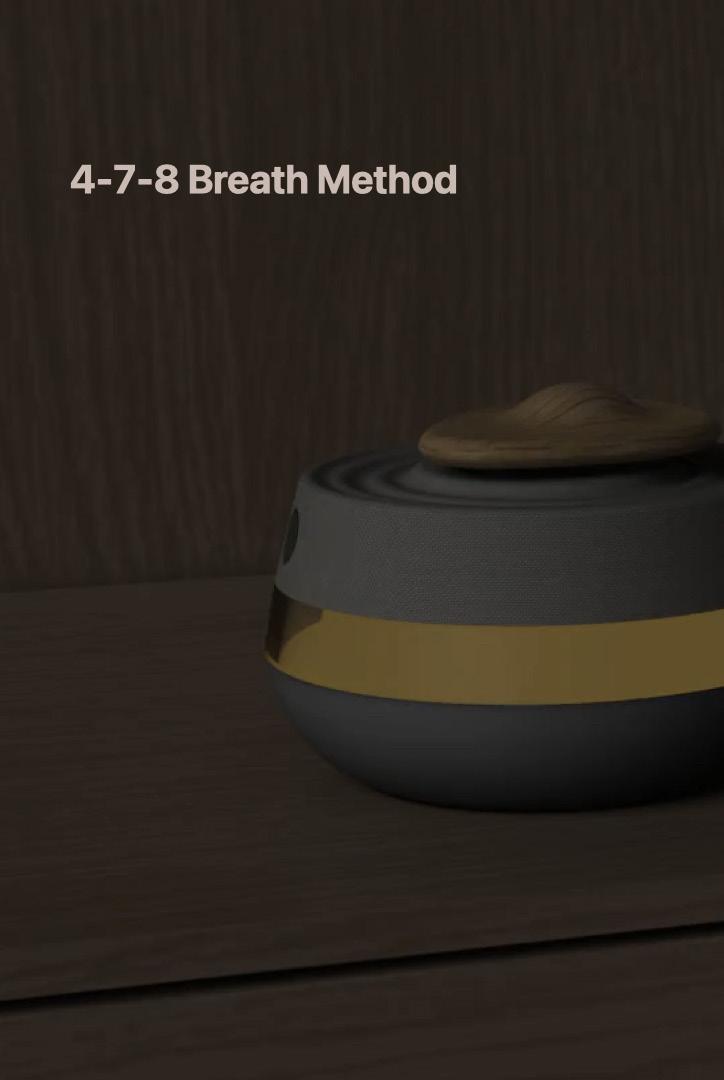
Deep breathing can PTSD suffers cope with the stress from these events. Breathing exercises are promoted through light cues, follow the 4-7-8 breath method.



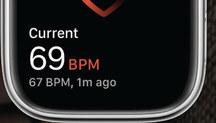
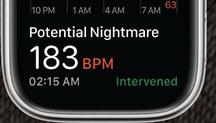
When Lumnieo senses an increased heart rate through apple watch, indicating a possible nightmare, Lumineo's gently awakens the user with light cues, providing a soothing transition from sleep to wakefulness.






On the top of Lumineo ripple, there are three rings. Different rings having the different comfort auditory for user to mix with the base sounds.


Sound hypnosis to help alleviate nightmares and promote a smoother transition to sleep through sensory, auditory and visual stimulation.


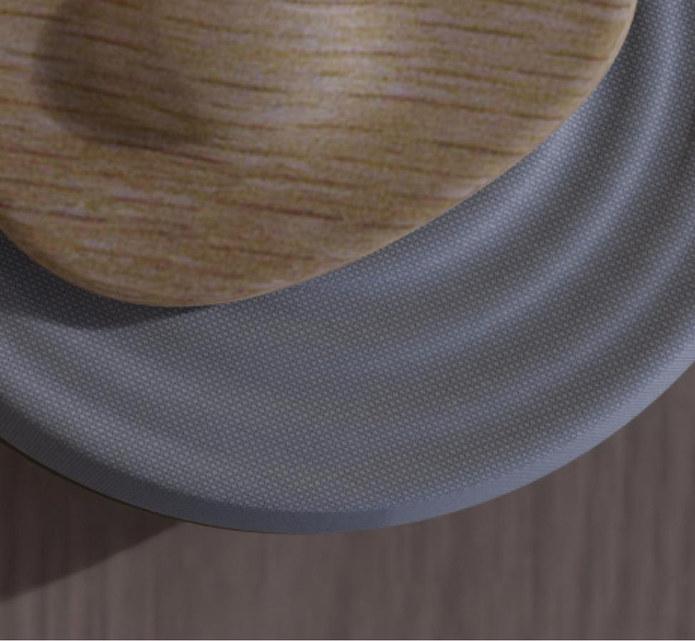















Light Your Way to Peaceful Nights and Brighter Mornings

Our emotional and mental states play an equally pivotal role. To further alleviate PTSD nightmares. I started to explore more about the mental wellness field.










When people have mental wellness issues, professional help could be the first choice, but some of them refuse to see a therapist or drop out the session.

I posted a question online, what influenced your decision to stop attending therapy sessions. I received numbers of responses from online participants and my interviewees.

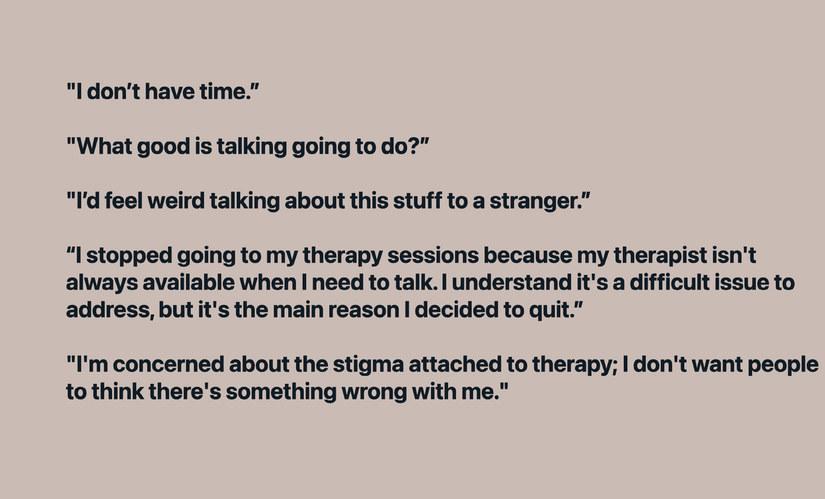



This answer drag me particular.
For patients seeking professional treatment for mental health issues but unable to secure timely appointments with their therapists


What they do? What can they do to help themselves?


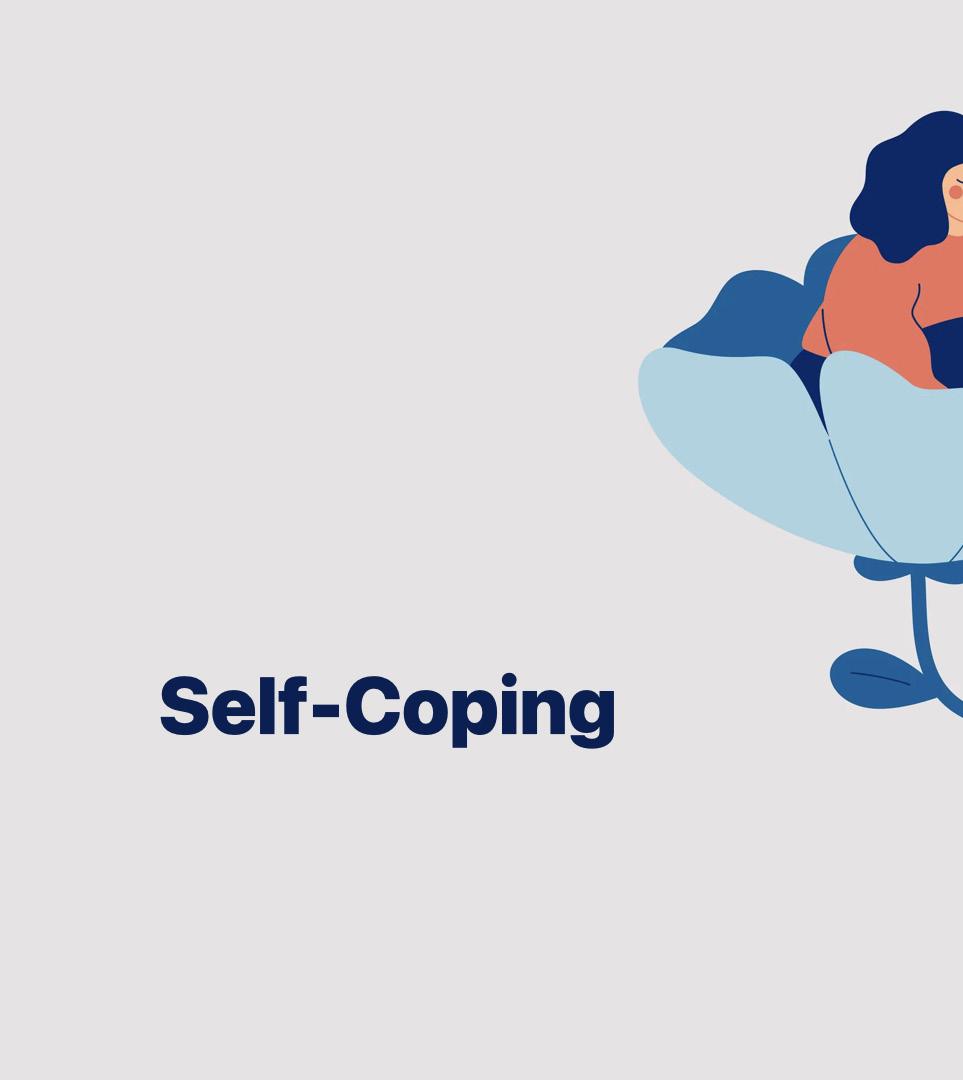

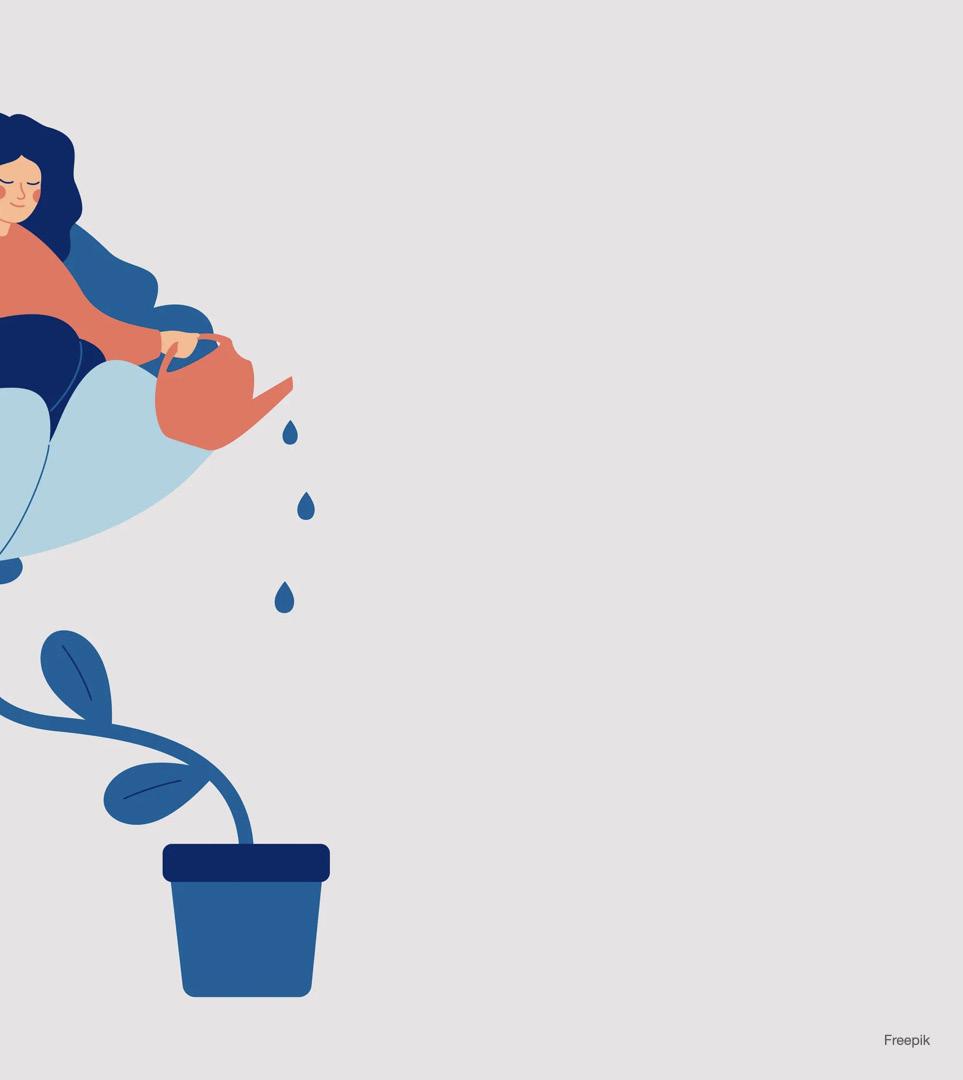

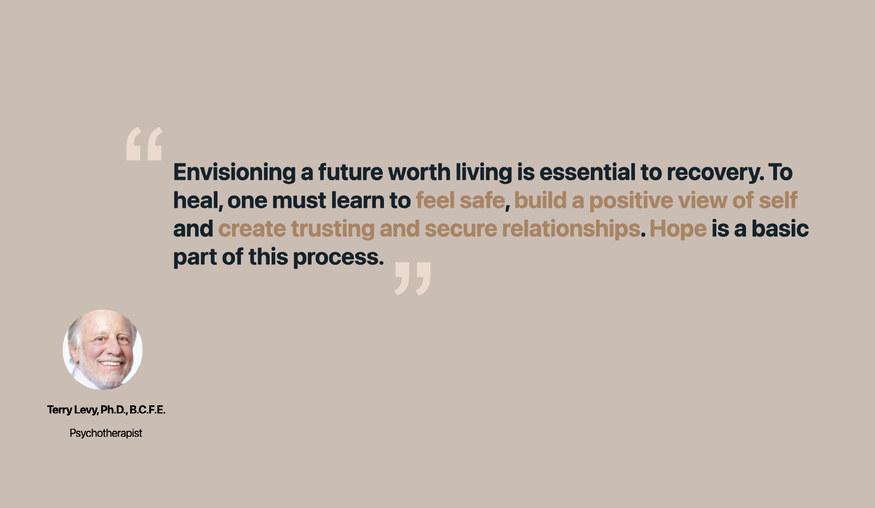




To enrich the understanding of the healing potential, consider the words from Psychotherapist Terry Levy, let user feel safe, build a positive view of themselves and create trusting and secure relationships with them. A sense of hope is the basic part of this process.




Therapup not only supports users in tracking and managing their mood but also actively contributes to building that vision of a hopeful, secure future, helps users identify patterns in their emotional well-being and encourages proactive self management of their mental health.





Enhances the user experience with motivational messages from a virtual ‘pup', and the opportunity to exchange activity photos with your 'pup' for emotional support.



View the stamp details of how you and your pup achieve this as self-motivation.

Therapup offers grounding skill-building games employ techniques such as color identification and sound recording to help users control their symptoms by turning attention away from thoughts, memories, or worries, and refocusing on the present moment.

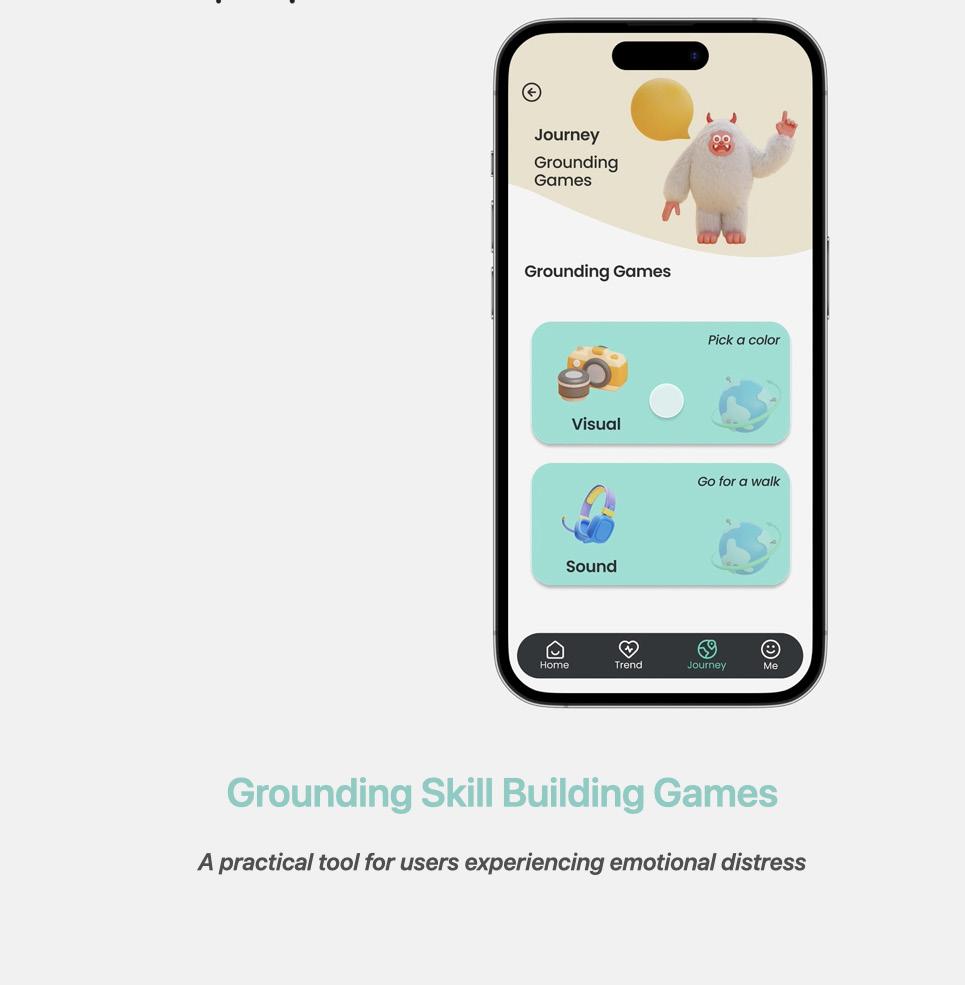
Therapup makes the process of grounding skills not just therapeutic but also engaging and interactive.



For those who need more direct support, Therapup facilitates connections to professional therapists.
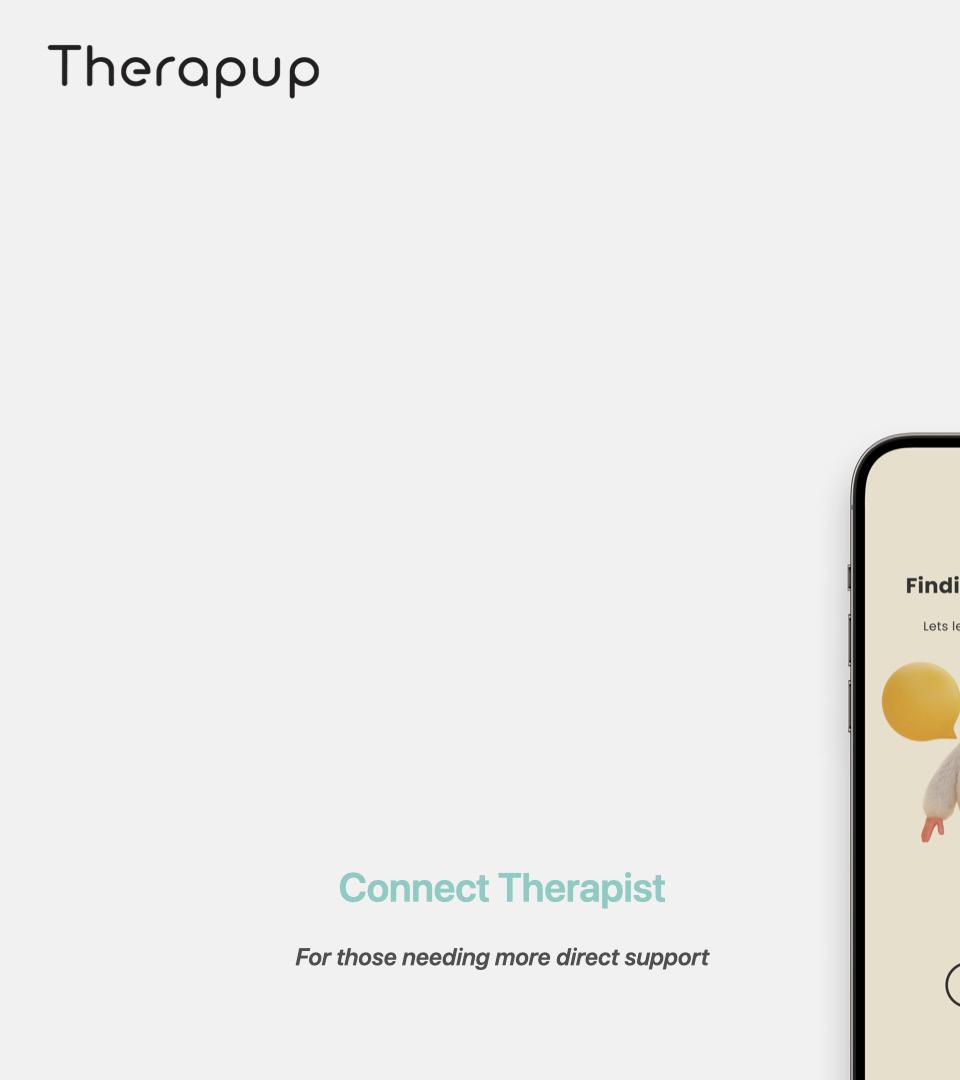




The platform ensures a respectful and supportive therapist connection by recommending that changes in therapists only be considered after at least three sessions.



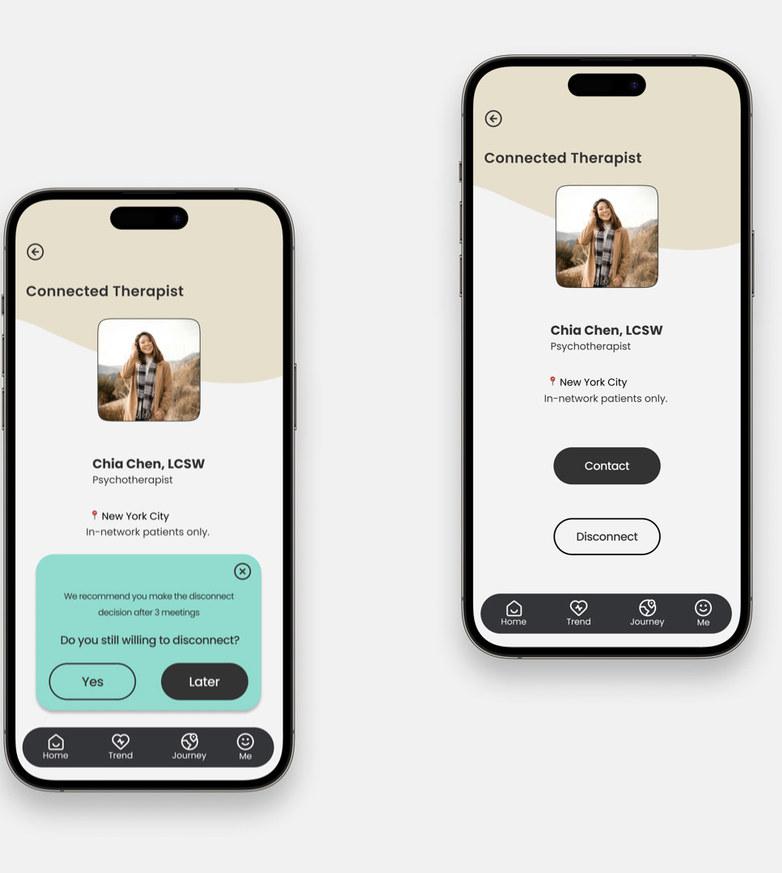
To foster a sense of community and ongoing support, it offers user attending community events to share their experiences, reinforcing no one is alone in their mental health journey.




Therapup distinguishes itself not only through its interactive features but also through its approachability and practical utility in mental health management.

My SME College Counselor Angel Liu shared her insights after Therapup’s usability testing. She underscores the platform's potential as a valuable tool in therapeutic settings, assisting users in managing their mental health proactively between professional consultations.










































